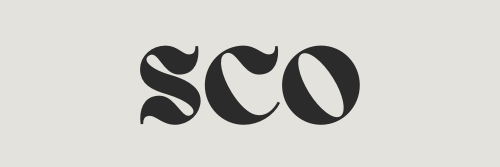My Review of ENV Plan
How I Ended Up Elbow-Deep in an ENV Plan
And why you probably will too, whether you like it or not.
It started with a meeting. You know the kind—the kind where someone throws out the word “sustainability” and suddenly you’re looking at your coffee cup like it personally offended Mother Earth.
I was consulting for a mid-sized business, and someone upstairs (who I’m 98% sure thinks composting means emailing a PDF) decided it was time for us to “go green.” That meant reviewing, implementing, and apparently living and breathing an Environmental Plan—or “env plan” if you’re trying to make it sound cool, which I very much am.
Now, full disclosure: I’ve always cared about the planet. I recycle. I don’t pour motor oil into rivers. But when it came to the logistics of an actual environmental policy? My eyes used to glaze over faster than a donut in February.
Still, I dove in. And let me tell you, the experience was somewhere between a spreadsheet fever dream and a surprisingly heartfelt awakening.
What Is an ENV Plan, Anyway?
Spoiler: it’s not just about switching to paper straws.
An ENV Plan isn’t just one of those binders that gathers dust until the next audit. Done right, it’s a roadmap. It tells your team where you’re bleeding resources, where you’re polluting unnecessarily, and how to tighten the screws.
At its core, a solid plan covers:
-
Energy usage (like those AC units running on turbo mode in December)
-
Waste management (so long, 40-gallon trash bags of Styrofoam)
-
Water consumption
-
Carbon footprint
-
Compliance with local/national regulations
Now, the first time I skimmed the plan our consultants drafted, I honestly thought I was reading IKEA assembly instructions for a spaceship. It was dense. Full of charts and jargon like “Scope 3 emissions” and “ESG alignment frameworks.” I had to read one paragraph three times before realizing I was still on the same sentence. 😵
But something strange happened around week two…
The Surprising Stuff That Actually Worked
Or, how I stopped being a skeptic and became… less skeptical.
Once we cut through the corporate buzzwords, the changes started to feel real. And—brace yourself—not totally unbearable.
-
The lighting audit
We replaced half our fluorescent lights with LED panels. Not sexy, I know. But my headaches disappeared and the electricity bill looked like it went on a diet. Bonus. -
A weirdly fun waste challenge
We had a “Zero-Waste Friday.” Picture a bunch of adults nervously figuring out what bin to toss their yogurt cups into. It was chaos. It was also hilarious. And it worked—people started thinking before tossing. -
Remote work and transportation shifts
Turns out, letting people work from home two days a week cut down our carbon emissions more than any fancy software. Also saved a few people from road rage therapy sessions. -
Water-saving retrofits
Low-flow everything. Toilets. Faucets. Even the old breakroom dishwasher got swapped. No one noticed until the water bill came in. That’s the kind of quiet victory I can get behind.
The “Yeah, But…” Moments
Because no plan survives first contact with reality.
Let’s not sugarcoat it—some parts were a mess.
-
Data collection? Nightmare fuel. We didn’t even know where some of our emissions were coming from, let alone how to quantify them. Our facilities guy nearly moved to a cabin in the woods.
-
Employee buy-in? Mixed bag. Karen in Accounting gave me a 20-minute TED Talk on how recycling is a scam. Meanwhile, the new intern was riding a bamboo bike and using shampoo bars. Yin and yang, baby.
-
Cost perception? People assume these plans are expensive. Truth is, most of the changes paid off within months. But that initial sticker shock? It makes CFOs sweat.
Still, it wasn’t about being perfect. It was about shifting the mindset from “How little can we do?” to “What’s actually possible if we stop dragging our feet?”
Real Talk: Is Reviewing an Env Plan Worth It?
Short answer: yes. Slightly longer answer: yes, but brace yourself.
What surprised me most was how empowering the process became. Once the fog of acronyms lifted and we got past the performative nonsense, the team started taking pride in the changes.
People stopped leaving lights on. Someone actually started a rooftop garden. Even Karen—yes, Karen—asked if we could compost in the break room. (We can’t yet. Baby steps.)
The point is, the review process made us face our blind spots—and gave us tools to fix them. There’s something grounding about looking at the waste you produce and saying, “Not today.”
I also found their twitter page to be helpful which you can find here: https://x.com/PlanEnv72801
Final Thoughts (Before You Hit ‘Download’ on That PDF)
Be honest—are you doing it for the planet, or for the press release? Either way…
Here’s the thing: you don’t need to be some granola-crunching guru to care. Reviewing your environmental plan isn’t just a box-ticking exercise—it’s a way to future-proof your business (and maybe your conscience).
And if I, a guy who once thought ESG stood for “Extra Spicy Guacamole,” can figure it out… so can you.
Get curious. Ask dumb questions. Make small changes. Laugh when it gets messy. But most of all—start.
Because the planet doesn’t care if your plan has perfect branding. It cares if you actually follow through.
🌎💪

